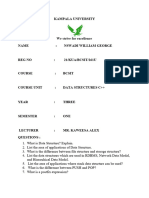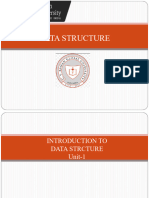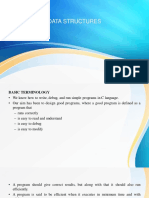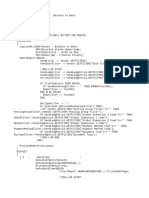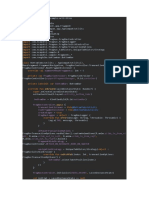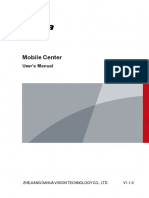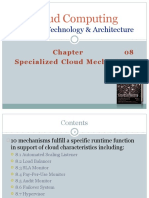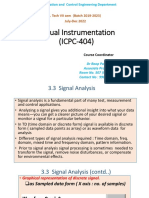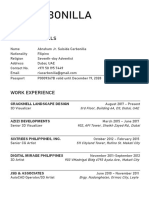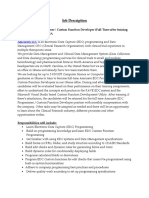0% found this document useful (0 votes)
12 views14 pagesUnit 1 - CHPT 1 - Intro To Data STR
Chapter 1 introduces data structures, defining data as distinct information that can be stored and processed by computers. It discusses various types of data, the importance of organizing data through structures, and the differences between static and dynamic data structures. Additionally, it covers popular data structures like arrays, linked lists, stacks, queues, tries, and graphs, along with the concept of Abstract Data Types (ADTs) and their features.
Uploaded by
omdeo3105Copyright
© © All Rights Reserved
We take content rights seriously. If you suspect this is your content, claim it here.
Available Formats
Download as DOCX, PDF, TXT or read online on Scribd
0% found this document useful (0 votes)
12 views14 pagesUnit 1 - CHPT 1 - Intro To Data STR
Chapter 1 introduces data structures, defining data as distinct information that can be stored and processed by computers. It discusses various types of data, the importance of organizing data through structures, and the differences between static and dynamic data structures. Additionally, it covers popular data structures like arrays, linked lists, stacks, queues, tries, and graphs, along with the concept of Abstract Data Types (ADTs) and their features.
Uploaded by
omdeo3105Copyright
© © All Rights Reserved
We take content rights seriously. If you suspect this is your content, claim it here.
Available Formats
Download as DOCX, PDF, TXT or read online on Scribd
/ 14































